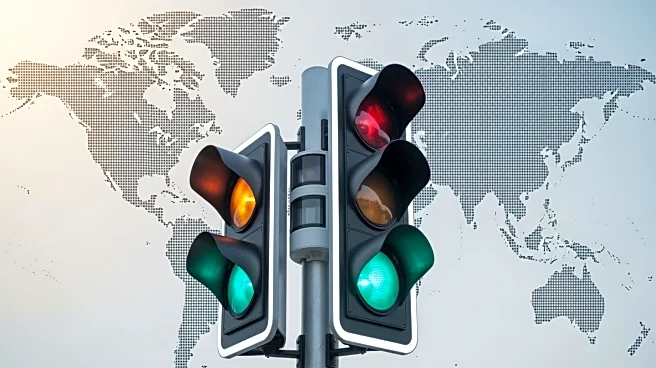What's Happening?
A recent study has introduced a hybrid machine learning-enhanced model for transport safety engineering, focusing on improving safety performance indicators (SPIs) across various countries. The model utilizes
radar plots to track the dynamic evolution of SPIs over time, allowing for ongoing performance assessment and adaptation. The study highlights improvements in transport safety among Organization of American States (OAS) member countries, with notable advancements in indicators such as traffic fatalities and seatbelt usage. The analysis provides insights for policymakers and stakeholders, emphasizing the need for targeted interventions to enhance transport safety.
Why It's Important?
The development of this machine learning model is significant as it offers a comprehensive approach to evaluating and improving transport safety measures globally. By identifying strengths and weaknesses in transport safety performance, the model supports evidence-based policy refinement and strategic planning. Countries with high safety scores can share best practices, while those with lower scores can identify areas for improvement. This collaborative approach can lead to reduced fatality rates and safer roads, benefiting public safety and potentially influencing transport policies in the U.S. and other nations.
What's Next?
The study suggests that countries should focus on strengthening transport safety measures and expanding road network density. Policymakers are encouraged to use the insights from the model to implement targeted interventions and improvements in critical areas. The ongoing assessment of SPIs will enable countries to adapt strategies effectively, responding to trends and enhancing performance. This could lead to increased collaboration among nations, fostering shared learning and improvement in transport safety practices.
Beyond the Headlines
The model's emphasis on benchmarking and cross-country comparisons highlights the importance of international collaboration in transport safety. By sharing knowledge and best practices, countries can collectively improve safety standards and reduce traffic-related fatalities. The study also underscores the role of socioeconomic factors in transport safety, suggesting that economic development can support infrastructure improvements and enforcement of safety laws.











